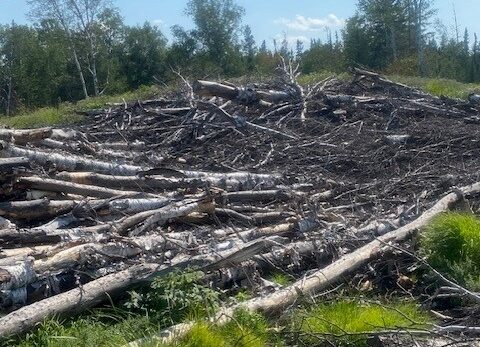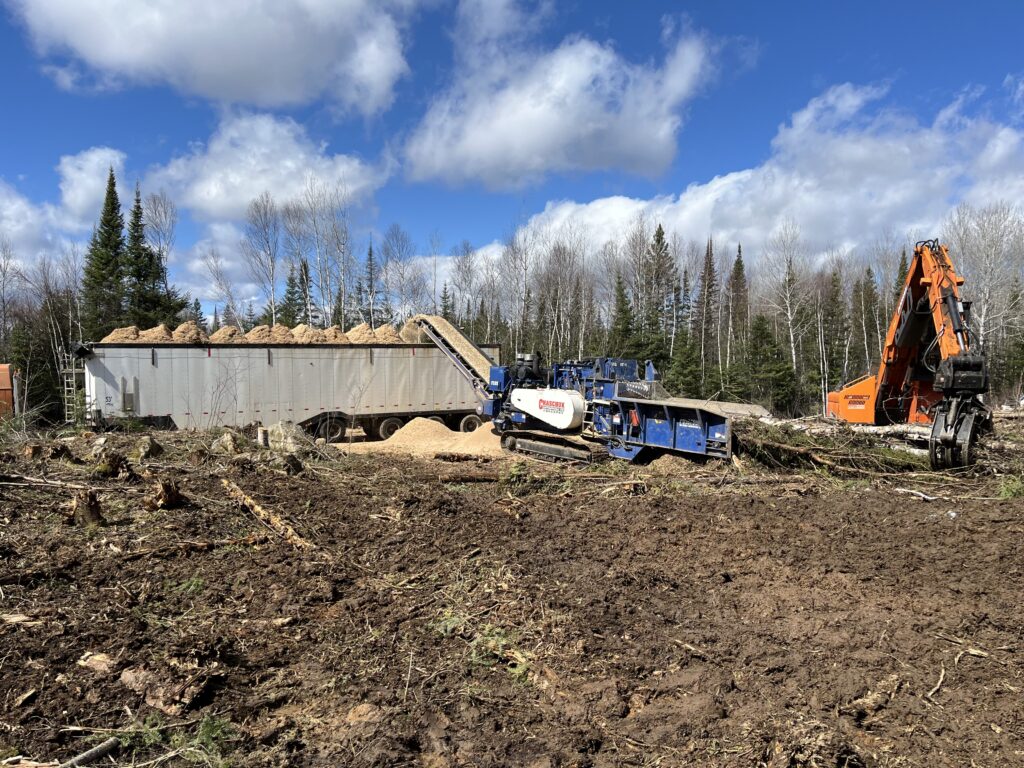The Wood Pellet Association of Canada (WPAC), in collaboration with BioPower Sustainable Energy Corporation (BioPower), has completed a study that outlines the feasibility and economic implications of in-woods grinding to process forest biomass for wood pelletization in Ontario.
The study, led by Dr. Fahimeh Yazdan Panah, WPAC’s Director of Research and Technical Development, highlights that forest biomass when processed with the right technology, such as in-woods grinding, can serve as an economically viable feedstock for wood pellet production in Ontario.
The study was funded by the Ontario Forest Biomass Program, which supports the objectives set out in Ontario’s Forest Sector Strategy and Forest Biomass Action Plan and helps fund initiatives that secure and increase long-term wood utilization, including biomass.
Solving Contamination and Higher Moisture and Ash Content in the Woods

Ontario’s forests contain vast amounts of biomass, including treetops, branches, low-quality logs, and fire-damaged timber, traditionally left behind or burned after logging. However, forest biomass is often contaminated with soil and other debris. It also tends to have higher moisture and ash content, complicating the pelletization process.
In the study, a Peterson 4710B grinder was used at the logging site to process forest residues into uniform feedstock suitable for pelletization. This approach’s key advantage is that it reduces the volume of material to be transported, which can significantly lower transportation costs—a crucial factor in remote forest locations.
The study found that the ground material produced through in-woods grinding, after appropriate drying and cleaning, could meet international standards for wood pellet production, including ISO 17225-2.
Economic Analysis Recommendations: Large-Scale Operations Own, Small-to-Medium Operations Outsource
The WPAC and BioPower study also evaluated the economic implications of two different operational models:
- Scenario 1: Pellet producer owns and operates the grinding equipment.
- Scenario 2: Grinding and delivery are outsourced to a third-party supplier.
Each scenario offers distinct advantages and trade-offs, depending on the scale of operations and long-term strategic goals.
Scenario 1: Ownership and Operation
The pellet plant owns and operates all necessary equipment in this model, including the Peterson 4710B grinder, trucks and loaders. The study found that this approach could be cost-effective for large-scale operations with consistent biomass availability. The cost per tonne in this scenario ranged from $41.68 to $52.46 per tonne, depending on factors such as the type of transportation and operational fees. While ownership requires a significant upfront capital investment, it offers the potential for long-term cost savings and greater control over the entire supply chain.
Scenario 2: Outsourcing Material Delivery
Outsourcing grinding and transportation to a third-party provider offers financial predictability and reduced operational complexity for companies that may not have the capital to invest in heavy equipment or those dealing with inconsistent biomass availability, particularly for smaller pellet producers. The study found that outsourcing results in a fixed cost of $44.00 to $49.00 per tonne. However, it does introduce dependency on external suppliers, which could lead to challenges if there are disruptions in the supply chain.
Conclusion: Using In-Woods Grinding Is Economical and Feasible for the Ontario Wood Pellet Industry
By adopting advanced techniques and carefully weighing the benefits of owning versus outsourcing equipment, pellet producers can enhance operational efficiency and significantly reduce costs. Moreover, integrating forest biomass into production can contribute to improving forest health, reducing wildfire risks, and advancing climate action by utilizing a renewable energy source and offsetting the use of fossil fuels.
Operationally, in-woods grinding improves the efficiency of biomass transportation by reducing the volume of material that needs to be moved, which can lower greenhouse gas emissions associated with transportation. The ground biomass can be further refined and pelletized, creating a product that complies with stringent international standards, ensuring that Ontario’s wood pellet industry can compete in the global market.
For further insights and detailed analysis, the full WPAC report offers valuable recommendations for advancing the use of forest biomass in wood pellet production.
Gordon Murray is the Executive Director of the Wood Pellet Association of Canada.

